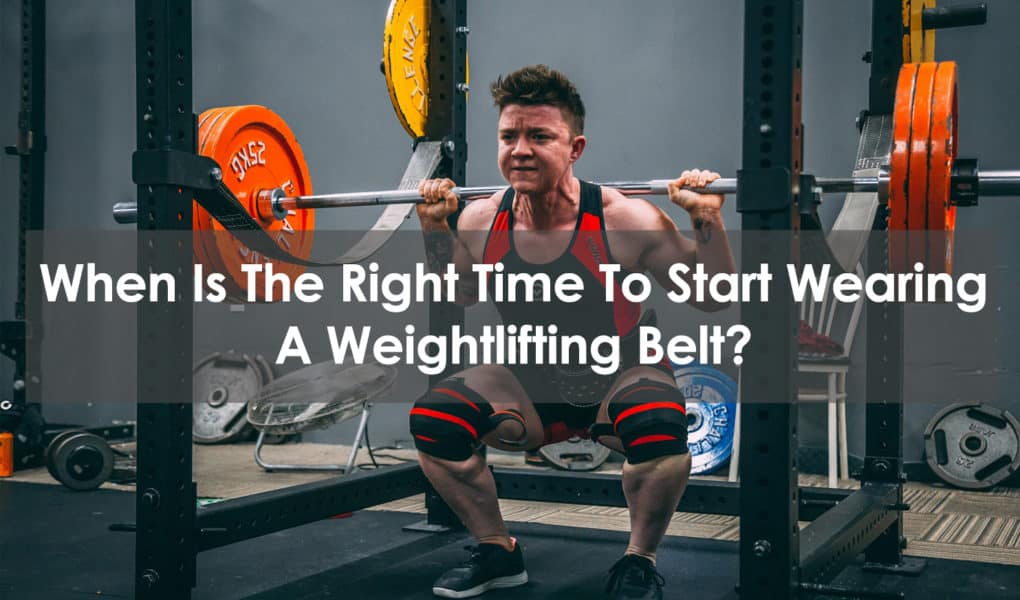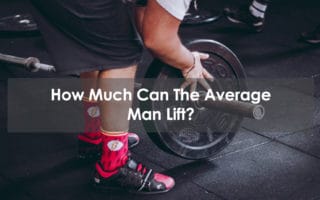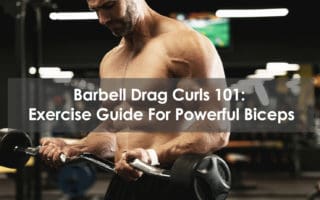For those looking to complete heavy lifts in the gym, a weightlifting belt can provide some useful benefits. The belt creates intra-abdominal pressure to provide support and stability to your spine, which reduces the chances of injury and encourages proper form.
However, a weightlifting belt isn’t always appropriate; it should only be used for certain lifts, and it isn’t necessarily a piece of kit that beginners should consider using, as it only becomes relevant when you begin to lift heavy weight – roughly 60% of your one-rep-max.
Here, we’ll look in detail at when you should consider using a lifting belt and how to do so properly.
When to start wearing a weightlifting belt?
1. When lifting your heaviest lifts
In theory, a belt should only be worn for your heaviest lifts. Usually, these are heavy barbell lifts like squats and deadlifts where the weight is taken onto your back. The ideal form is essential when performing your maximal lift, and a belt can help to maintain that form.
Heavier loads equate to more strain on your back, so wearing a belt during exercise may help to relieve some of that pressure and keep your body in an optimal biomechanical position, ensuring proper technique.
There is no definitive point at which you should start using a weight belt, though as a general rule of thumb it’s a good idea to consider it when you are lifting at least 60% of your one-rep-max. This is because your back and core muscles will be working with significant resistance and a bodybuilding belt (as they’re sometimes also known) will help prevent injury with these heavier weights.
It’s also a useful tool if you’re considering entering or training for a powerlifting competition, as it can help you to reach your full lifting potential. If that’s the case, you should try to use it while training for competition lifts or Olympic weightlifting.
Plus, if you’re aiming to complete your maximum lifts and have a training style that focuses on extending your one-rep-max (a training style usually reserved for experienced lifters), then a bodybuilding belt can be useful.
A belt is mainly designed to be used for a few certain lifts, including a few heavy squat variations, deadlift variations, and the overhead press. Mostly, if not exclusively, a belt has the most benefits for barbell lifts and barbell training.
2. When performing overhead lifts
A belt can also be useful for some overhead lifts, like the military press, as it prevents your back from hyperextending and can provide additional stability.
In fact, a belt is only really beneficial for barbell lifts, as these are the ones that will impact your back the most. The only exception to this might be bicep curls, which can be performed with dumbbells and also require a strong core and stable spine.
In general, those involved in recreational lifting will not have a pressing need to use a weightlifting belt. If you find that you’re relying on a belt to maintain the correct form, consider receiving coaching from a personal trainer, or use lighter weights to perfect your form.
A belt is also only suitable for certain lifts and exercises. Wearing a belt for machine exercises, for example, doesn’t make much sense as the machines are designed to provide all the relevant support you need for your spine and core.
The benefits of weightlifting belts also aren’t going to be felt when lifting lighter weight, as your spine requires less stabilization and support. This is also the case for cardio workouts and circuit weight training; for these, your body needs to be able to breathe and move freely, and a belt would limit your ability to do so.
Read More: What Does A Weightlifting Belt Do?
When not to use a weightlifting belt
With all that being said, this next point should be fairly obvious; you shouldn’t wear a belt when lifting relatively light weight and certainly not when you’re just working with body weight.
There are a limited amount of lifts and exercises that a belt would be suitable for; squats and deadlifts are the standout ones. Anytime your back is supported, such as on most resistance machines, you won’t need a weightlifting belt.
You should also avoid using a belt if you don’t have particularly high levels of core strength. The use of a belt lowers the need for your core muscles to work as hard and so they can actually become slightly weakened, however, a strong core is required for many compound exercises.
It should go without saying that you don’t need a belt for bodyweight movements, or cardio training!
How to wear a weightlifting belt
The belt should wrap around your core muscles, and it should sit just below your rib cage and slightly above the top of your pelvis, making it more of an abdominal belt. The belt position is important as it ensures your core muscles are wrapped and pressurized.
The most important element of how to wear your belt is the level of tightness. Weightlifting belts will be adjustable so that you can make sure you’ve got the right fit. There’s an array of weightlifting belts out there but all of them will allow you to adjust the tightness.
The belt should not be so tight that you can’t take a deep breath while wearing it, however, it should be tight enough that you are unable to fit your hand between the belt and the skin of your torso. Obviously, you also don’t want the belt moving around while you’re doing your lifts.
You should remove the belt between sets to allow for more natural breathing and to ensure there isn’t sustained pressure on your core muscles, before ensuring the belt is properly reattached prior to every new set.
Final thoughts
One of the best times to start using a weightlifting belt is when you begin working toward maximal strength training, meaning that you will regularly be lifting heavyweights. This is also the case if you are aiming to become a competitive lifter and want to aid your progress as much as possible.
Belts are not designed for beginners who are lifting lighter weights and still perfecting their form, and they are also mainly suitable for barbell lifts as opposed to bodyweight training, resistance machines, or dumbbell lifts.
Freqeuntly Asked Questions
Is it better to do squats with or without a belt?
This depends on how much weight you are squatting. If you are going heavy – at least 60% of your one-rep-max – then a belt can help to eliminate bad form and support your spine against injury, particularly with deep squats.
Anything lighter than this and a belt becomes less important, though it should be noted it is never fully necessary to wear one and it can often be a matter of personal preference.
Does a weightlifting belt weaken your core?
Over-reliance on a weightlifting belt can lead to the weakening of your core muscles, as they will be working a lot less in comparison to other parts of your body. The pressure the belt creates to ensure a rigid torso replaces the work your core muscles would be doing.
This can affect core strength and, subsequently, core stabilization whenever you aren’t wearing a weight lifting belt. Foundational core strength is a vital part of many lifts and exercises and you should aim to have a core training program, particularly if you use a weightlifting belt.







